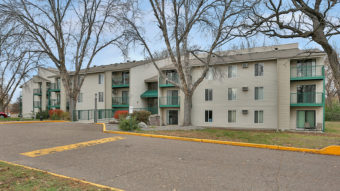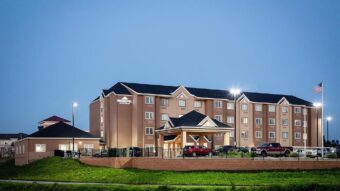By Ron Mrozek, Huntington Construction
At a time when commercial development has settled into a pattern of steady growth after the turbulence and tumult of the late 2000s recession and subsequent recovery, it’s worth taking a step back and taking a closer look at some of the construction trends that are shaping new office development and redevelopment across the Midwest.
From a style preference and aesthetic standpoint, there are a number of design trends and tenant preferences that have been building momentum for some time now and have emerged as truly influential “must-haves” in recent years.
Generally speaking, office tenants are prioritizing higher-end finishes that go well beyond standard tenant build-out standards. They are looking for more creative and interesting spaces that are simply a lot more fun than traditional office layouts. Those non-traditional spaces range from more useful and engaging common areas to more spaces and built environments designed to make it possible for employees to get out of individual offices or cubicles and spend time being both social and productive.
From community meeting areas, to relaxed spaces filled with comfortable furniture to nooks and crannies designed to promote a social atmosphere while allowing individual employees to get some work done, the range of flexible, collaborative and community environments is extensive and growing. Office tenants are actively looking for more open spaces, accentuating the modern look with open ceilings and exposed ductwork that contributes to that raw industrial feel.
Along those same lines, we are seeing a move toward standing furniture and other unconventional furniture solutions. The goal is to facilitate or promote a more active and engaged workplace lifestyle, and office tenants are using design and décor to accomplish that goal. From the standpoint of materials and finishings, Midwest offices are mirroring broader trends across the country in terms of moving away from generic wallpaper and embracing health-and-comfort extras like low-VOC paint and upgraded carpeting. There is more integration of glass both inside and outside office buildings, something that helps open up interior spaces, maximize natural lighting and create a more appealing and inviting environment.
Upgraded lighting is becoming more rule than exception as of late, with indirect lighting and LEDs growing in popularity. This is part of a larger move away from fluorescent bulbs, but it also improves the quality of light in many offices, and takes advantage of potentially significant energy savings. That growing focus on energy efficiency and green materials and design concepts is certainly showing no signs of slowing. Sustainable solutions are more popular than ever, and the financial dynamics have a lot to do with that: “Going green” has almost always been a costly proposition, but as costs continue to come down, more office tenants are increasingly interested in the potential health, wellness, productivity and economic benefits of green design and construction.
Another noteworthy office construction and design trend is the creation of landlord common spaces and lobby areas, and signature office facilities that display a significant “wow” factor. In some cases, lobbies and common areas have become collaborative and functional spaces, equipped with wifi and other conveniences. In an increasingly competitive marketplace, buildings need to stand out and grab the attention of potential tenants. That same factor is prompting the addition of high-end amenities like in-house dining options and spa or workout facilities.
As more medical and therapeutic uses continue to take space in retail and mixed-use centers, medical centers and other health services are working to make their exterior designs less clinical and more inviting, and are populating their interiors with more comfortable spaces that provide a look and feel that is more like that of a hospitality experience.
As for the bigger picture, construction and development trends vary across the Midwest region, with sometimes-significant differences from state to state and market to market. In Michigan, for example, where there is little to no industrial product left, we are starting to see a move toward more spec development. The expectation is that we will subsequently be seeing more new product on the market in the next 12 to 24 months.
This trend is happening throughout the Midwest, and in fact Michigan is lagging somewhat behind the regional curve in that respect (partly as a result of the state’s automotive focus). There is a tremendous amount of spec building and build-to-suit going on in Columbus, Ohio, for example. We are also seeing some true headline projects in urban centers around the region. In Milwaukee, a massive new basketball arena is at the heart of a project that includes residential and retail in addition to a large amount of Class-A office space.
As with the addition of new in-office amenities, signature urban locations are all about attracting new talent and keeping existing talent. A vibrant and dynamic urban environment with an abundance of dining and entertainment options is a real asset with respect to recruiting and retention. Landlords are prioritizing locations located near quality retail. Many large firms are working hard to try and maintain a presence in a big city, and office facilities like the arena project in Milwaukee give them an opportunity to do so in an attention-getting way.
While these trends are clearly evidence of growth around the region, many are the result of broader economic, industry and social forces that show little sign of slowing anytime soon. As a result, what we see across the Midwest in 2016 may be a sign of things to come not only for rest of this year, but for years to come.
Ron Mrozek is president of Southfield, Michigan-based Huntington Construction Company.



